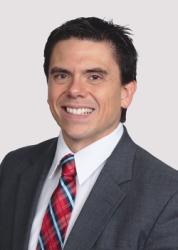Nonprofit Resources
Questions and Answers About the Economic Injury Disaster Loan (EIDL) Program
Like the PPP, the EIDL program is administered by the Small Business Administration (SBA). Organizations that are interested in applying must do so directly with the SBA through its application portal.
There are two types of proceeds that an organization can receive through the EIDL program:
- EIDL advance grant – Allocated based on the number of employees at $1,000 per employee, up to a maximum of $10,000. As of July 11, 2020, the SBA is no longer accepting new applications for the EIDL advance grant because the $20 billion allocated to the program by Congress has been exhausted.
- EIDL loan – Capped at $150,000 due to high demand.
An organization may apply for and receive both, though the maximum amount is still capped at a total of $150,000. Further, organizations that received an EIDL advance are not required to pay that amount back; however, if they also received a PPP loan, they must reduce the amount that can be forgiven by the amount of the EIDL advance.
Organizations that have received funding through the EIDL loan program or that are considering applying may have various questions. We address several of those questions here.
Who is eligible to apply for an EIDL loan?
All of the following types of organizations may apply for an EIDL loan:
- Small businesses (under 500 employees)
- Sole proprietors (under 500 employees)
- Cooperatives (under 500 employees)
- Private nonprofit organizations (under 500 employees) described in Internal Revenue Code subsections 501(c), (d), or (e), or organizations that can provide evidence that they are operating as such under state law
To obtain an EIDL loan, an organization must demonstrate substantial economic injury as a result of COVID-19. The SBA has stated that substantial economic injury is a “decrease in income from operations or working capital with the result that the business is unable to meet its obligations and pay ordinary and necessary operating expenses in the normal course of business.” For a nonprofit organization whose revenues are primarily driven by donations and other contributions, this would mean a reduction in contributions that results in an inability to meet its operating obligations.
What are eligible uses of EIDL loan funds?
The EIDL program is designed to provide more flexibility than can be found under the PPP loan program. Broadly, an EIDL loan is meant to provide working capital for expenses that cannot be paid due to the impact of COVID-19. This can include, but is not limited to, payroll expenses, interest payments, accounts payable, and rent.
If an organization receives both a PPP loan and an EIDL, the loans may not be used for the same expenses for the same time period.
What are ineligible uses of the EIDL loan funds?
EIDL loan funds may not be used for:
- Dividends and bonuses
- Disbursements to owners, unless for performance of services
- Repayment of stockholder/principal loans
- Expansion of facilities or acquisition of fixed assets
- Repair or replacement of physical damages
- Refinancing of long-term debt
- Paying down or paying off loans provided or owned by another federal agency, including the SBA
- Repayment of any part of a direct federal debt, except IRS obligations
- Relocation expenses
What are the terms of the loan?
The interest rate for EIDL loans is 2.75% for nonprofit organizations and 3.75% for all other small businesses. The maximum term of the loan is up to 30 years, with the actual term being negotiated with the SBA. There is no prepayment penalty.
If I receive an EIDL advance, do I have to pay it back?
No. The advance does not need to be paid back. But if your organization receives a PPP loan and applies for forgiveness of that loan, you must reduce the forgivable amount by the advance amount received.
Can an employer receive both an EIDL loan and PPP loan?
Yes. But you may not use the EIDL loan and PPP loan proceeds for the same expenses.
Please contact us online or at [email protected] with questions.

Chris Purnell
Chris serves as Partner and Tax Counsel at CapinCrouse. A licensed attorney, he advises exempt organizations of all sizes on a wide range of issues, including tax and employee benefit related matters, representation before state and federal tax authorities, and assistance with firm audit or advisory engagements to formulate advice and counsel on important operating and tax issues. Chris also assists clients with general tax issues, unrelated business income, charitable solicitation, and missionary employment structures. Prior to joining CapinCrouse in 2019, Chris served as the Executive Director of the Neighborhood Christian Legal Clinic, the nation’s largest Christian legal aid organization. Note: Although licensed to practice law in Indiana, Chris’s services through CapinCrouse do not involve the practice of law and consequently do not result in the creation of an attorney-client relationship.
